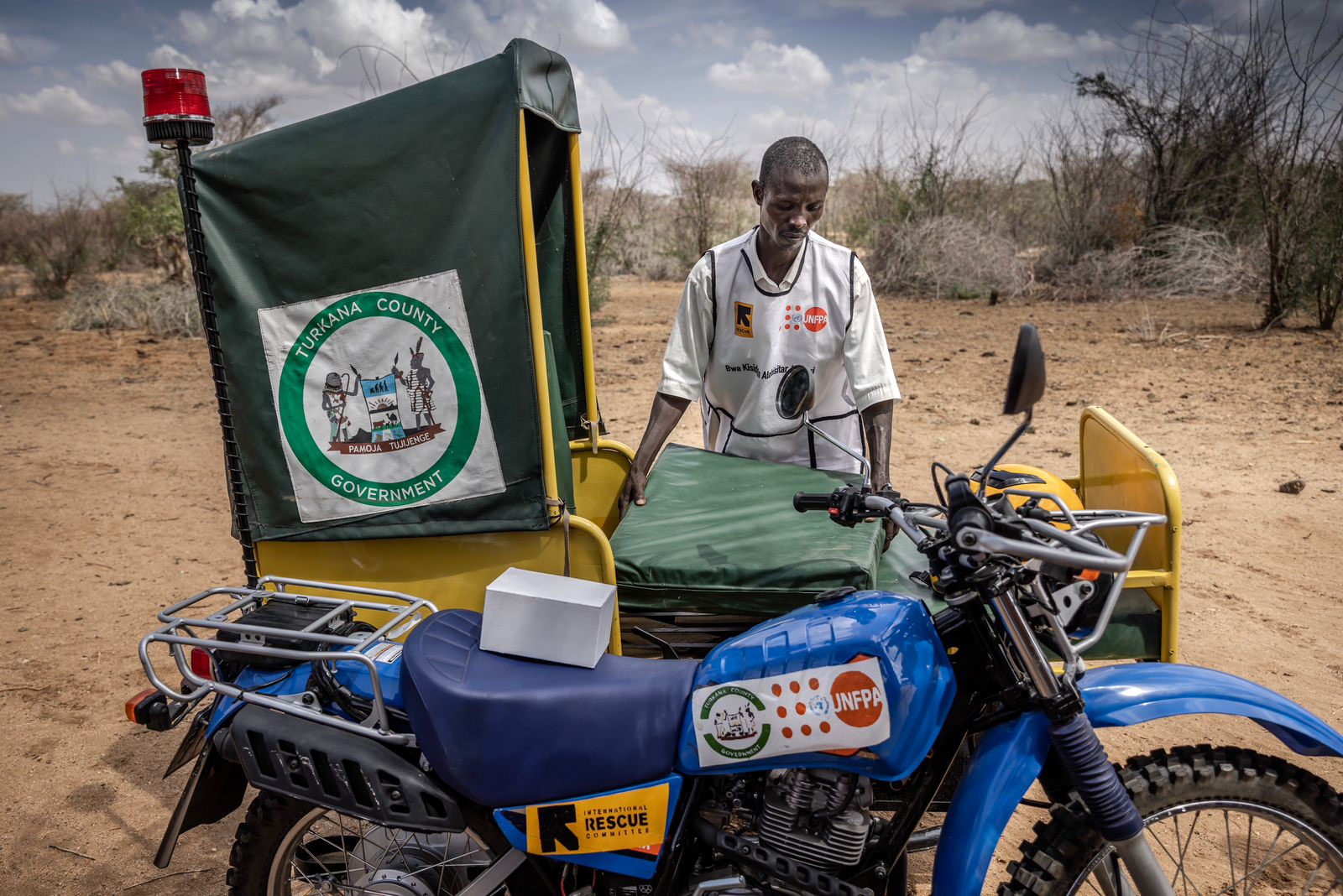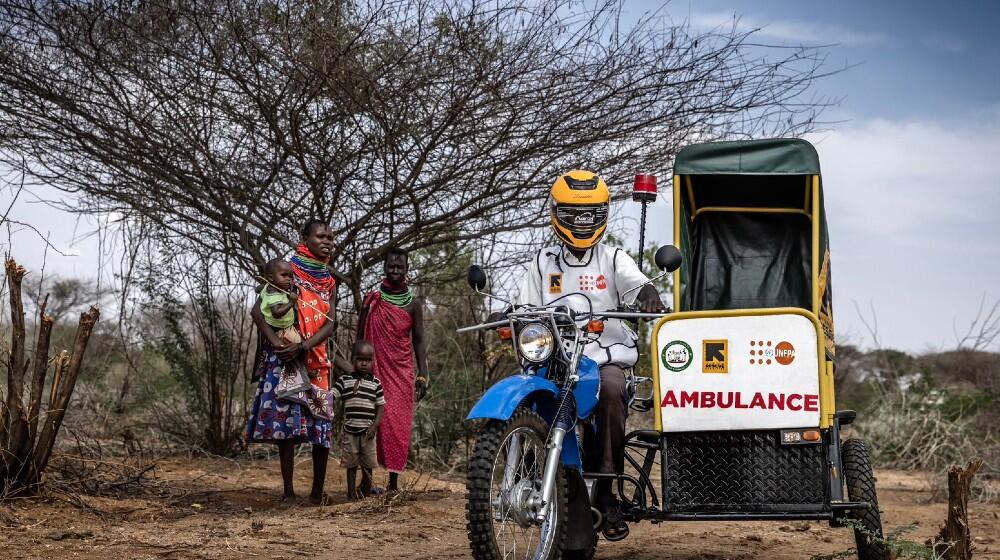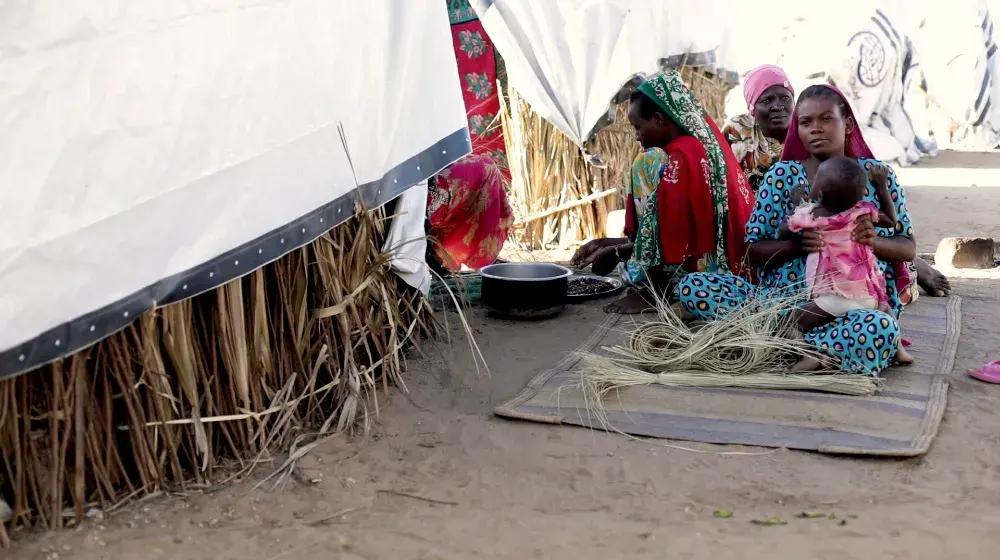Every month, midwives at the Katilu sub-county hospital help deliver at least 60 babies to women living in Turkana South sub-county. “We pride ourselves in having recorded zero maternal deaths in our facility over the last year,” says medical superintendent Mathew Bundotich.
The ongoing drought is however threatening to undo the gains made in the reduction of preventable maternal deaths, as families migrate further from the health facility in search of water and pasture for their animals. “With the increase in distance to the health facility, the number of ante-natal visits has dwindled. We have to follow the women into the community in order to reach them with the services,” says Bundotich.
In the month of November 2022, UNFPA through the International Rescue Committee (IRC) donated a motorcycle ambulance to the Katilu sub-county hospital to be used in providing emergency transport to the health facility, and for inter-facility referral of pregnant women. The ambulance is operated by community health volunteer Mark Epeyon, who has mastered the art of navigating both on and off-road terrain to reach mothers in urgent need of assistance.

“The hardship brought on by the drought has left many women weak and malnourished, and I cannot imagine them giving birth without the support of a skilled health professional,” says Epeyon. “When my wife got pregnant the first time, she gave birth at home and our child developed health complications that have affected him into adulthood,” he adds.
Determined to reach as many women as possible, Epeyon has been spreading the word about the motorcycle ambulance at integrated community health outreach events organized by IRC in response to the drought, and by door to door visits in the nearby villages. Having worked in the community for more than 11 years, he knows the ins and outs of the terrain and is able to quickly locate a mother in need.
In the one month that the ambulance has been in operation, Epeyon has safely transported five women with obstetric emergencies to the hospital, likely saving their lives and those of their newborns.
The ambulance’s ability to safely and comfortably transport one patient and an outreach medical worker, as well as emergency supplies for an on-site treatment, has significantly reduced the time required to deliver essential and urgent medical assistance to local communities. “The ambulance stretcher can also be adjusted to a semi-fowler’s position for the safe transfer of expectant mothers, and patients with breathing problems,” says IRC Reproductive Health Program Manager Isaac Kiroso.
“In the past, women have given birth on the roadside while trekking to hospital because they live too far from a health facility,” says Epeyon. “With the motorcycle ambulance, even if a woman delivers on the way, she is able to do so in a dignified manner, on a comfortable stretcher and with the help of a healthcare worker and myself,” he says.




